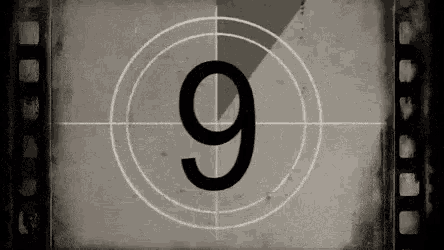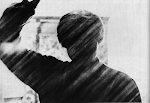Criterion Collection// 1932 // 84 Minutes // Not Rated
Review by Steve Evans
The pitch:
A sharp class satire by that master of cinema, Jean Renoir, son of an Impressionist painter.

The Criterion Collection delivers a sterling presentation of Boudu Sauvé des Eaux (Boudu Saved From Drowning), a timeless French film and small marvel of social satire, captured seven decades ago in luminous black-and-white by the filmmaking son of an Impressionist painter.
This early 1930s film by master director Jean Renoir presents the folly of Parisian bourgeois as farce—a theme that would dominate his later work and reach its apex with the 1939 production of Rules of the Game, widely acknowledged today both as Renoir's masterpiece and one of the greatest films of all time.
Actor-director Paul Mazursky, a Renoir devotee, would remake Boudu Saved From Drowning in 1986, crafting a similarly broad satire of materialistic obsession and class differences, updated for the Reagan era. Down and Out in Beverly Hills is a fine retelling, and would make a satisfying double feature with Renoir's film, presented here in a beautiful transfer by the cineastes at Criterion.
A bit of plot:
 Boudu, a tramp, haunts the parks of 1930s Paris, yearning only to be left alone. When his dog wanders off and abandons him, Boudu (Michel Simon, L'Atalante) despairs of living and decides to kill himself. Wandering into the city, the tramp crosses a bridge near the Louvre and leaps into the Seine. Wealthy bookseller Lestingois (Charles Granval, Golgotha) witnesses this suicide attempt and dives into the river to save the waterlogged bum. He does this as much from an altruistic spirit as a desire to inject some excitement into his life. When he's not cheating on his shrill wife, Lestingois fancies himself an idealistic liberal, devoted to the abstract ideal of Natural Man. Boudu, "the perfect tramp," represents the culmination of Lestingois' liberal-intellectual obsessions.
Boudu, a tramp, haunts the parks of 1930s Paris, yearning only to be left alone. When his dog wanders off and abandons him, Boudu (Michel Simon, L'Atalante) despairs of living and decides to kill himself. Wandering into the city, the tramp crosses a bridge near the Louvre and leaps into the Seine. Wealthy bookseller Lestingois (Charles Granval, Golgotha) witnesses this suicide attempt and dives into the river to save the waterlogged bum. He does this as much from an altruistic spirit as a desire to inject some excitement into his life. When he's not cheating on his shrill wife, Lestingois fancies himself an idealistic liberal, devoted to the abstract ideal of Natural Man. Boudu, "the perfect tramp," represents the culmination of Lestingois' liberal-intellectual obsessions.With the help of several bored onlookers, the bookseller carries Boudu back to his store and well-appointed home on the second floor. Lestingois' high-maintenance wife worries that Boudu will stain the carpets, or worse. The housekeeper, who is also the bookseller's torrid mistress, bemoans the thought of cleaning up after a tramp. Lestingois tells the women to hush, vowing to help Boudu get back on his feet and on a path toward respectability. But the irrepressible vagrant, who never wanted to be saved from the river, repays his benefactors with chaos. Boudu rocks the household to its foundation with boorish behavior and manners befitting a beast. He spits and stomps and smashes dishes in gleeful obliviousness. Boudu is not so much an anarchist (which would require careful calculation) as a force of nature unencumbered by social restraints. He is, quite plainly, a pain in the ass.
Aesthetics, Thematics & Context:
Satire may be the most difficult of literary forms to translate into film.
 Whether cloaked in bitterness and pessimism or ham-fisted proselytizing, there's always a risk that the satiric film will send an audience reeling for the exits—especially if they are the targets of the mockery. Even seasoned film buffs may be hard pressed to name more than a dozen successful cinematic satirists; most people draw a blank after dropping the names of Kubrick, Lindsay Anderson (O Lucky Man!), or more recently, David Fincher (Fight Club). Satire works best when it antagonizes, when it holds up a fool's mirror before an audience. This shock of recognition can only be a good thing, as complacency is the moss that gathers on a stagnant soul.
Whether cloaked in bitterness and pessimism or ham-fisted proselytizing, there's always a risk that the satiric film will send an audience reeling for the exits—especially if they are the targets of the mockery. Even seasoned film buffs may be hard pressed to name more than a dozen successful cinematic satirists; most people draw a blank after dropping the names of Kubrick, Lindsay Anderson (O Lucky Man!), or more recently, David Fincher (Fight Club). Satire works best when it antagonizes, when it holds up a fool's mirror before an audience. This shock of recognition can only be a good thing, as complacency is the moss that gathers on a stagnant soul.Renoir and star Michel Simon acknowledge in an interview on this disc, conducted more than 30 years after Boudu's initial release in 1932, that police were called to restore order at several first-run theaters. Turns out French audiences were outraged by Boudu's antisocial behavior, which remains fairly obnoxious today. Renoir recalls that his picture was even pulled from some theaters after three days due to the angry reception. Society ladies, especially, complained they were offended (or were they threatened, maybe even aroused?) by Boudu's rakish charm. They could not forgive his penchant for polishing his shoes with a woman's silken undergarments and bed sheets, or his rather nasty habit of spitting in rare books of an intellectual or poetic bent, especially volumes of Voltaire.
Yes, it seems Renoir plucked all the right nerves.
Criterion provides a sparkling transfer of this 77-year-old film, with a remarkably clean mono track and a marvelous set of extras. Perhaps the best supplemental feature on the disc (there is some competition here) is a virtual tour of 1930s Paris, incorporating maps, film clips, and uncommonly intelligent narration. The 1967 interview with Renoir and his star offers superb perspective on the film. Their comments make it clear that working on Boudu was a career highlight and the beginning of a lifelong friendship.
Only the absence of a commentary track prevents this superb disc from flying into that rarefied realm of perfection. A 12-minute interview with filmmaker Jean-Pierre Gorin, recorded in 2005, merely whets the appetite for a feature-length commentary.
Why is this important? Because history can become confused and obfuscated, depending on who’s telling the story. The lingering influence of Boudu, from staged play (by René Fauchois) into film, demands clarity and candor.
Renoir infused his films with symbolism and metaphor, while drawing inspiration from his father, Impressionist painter Auguste Renoir, in terms of composition and setting. Today, the son's influence on cinema arguably exceeds the significance of the father's work as a painter. A decorated veteran of World War I, Jean Renoir's experiences in battle never dulled the essential humanity at the core of his art—even when he was at his scathingly critical best in films like Grand Illusion. So a commentary track by a Renoir expert would have added to our appreciation of Boudu. Still, Criterion delivers a superb selection of added-value content, as is their custom. Their DVD product costs a little more, but you can see, hear and feel where that extra money went.
As a freewheeling film fan, I would not restrain Monsieur Boudu, who is undoubtedly raising hell somewhere even as I conclude my thoughts on an entertaining and timeless film by Jean Renoir, one of the great provocateurs of world cinema.
So let us dispense with further verbosity and get down to it: Boudu Saved From Drowning belongs in any serious collection.
Copyright © 2008 by Cinematic Cteve // dba Cinema Uprising. All rights reserved.





















